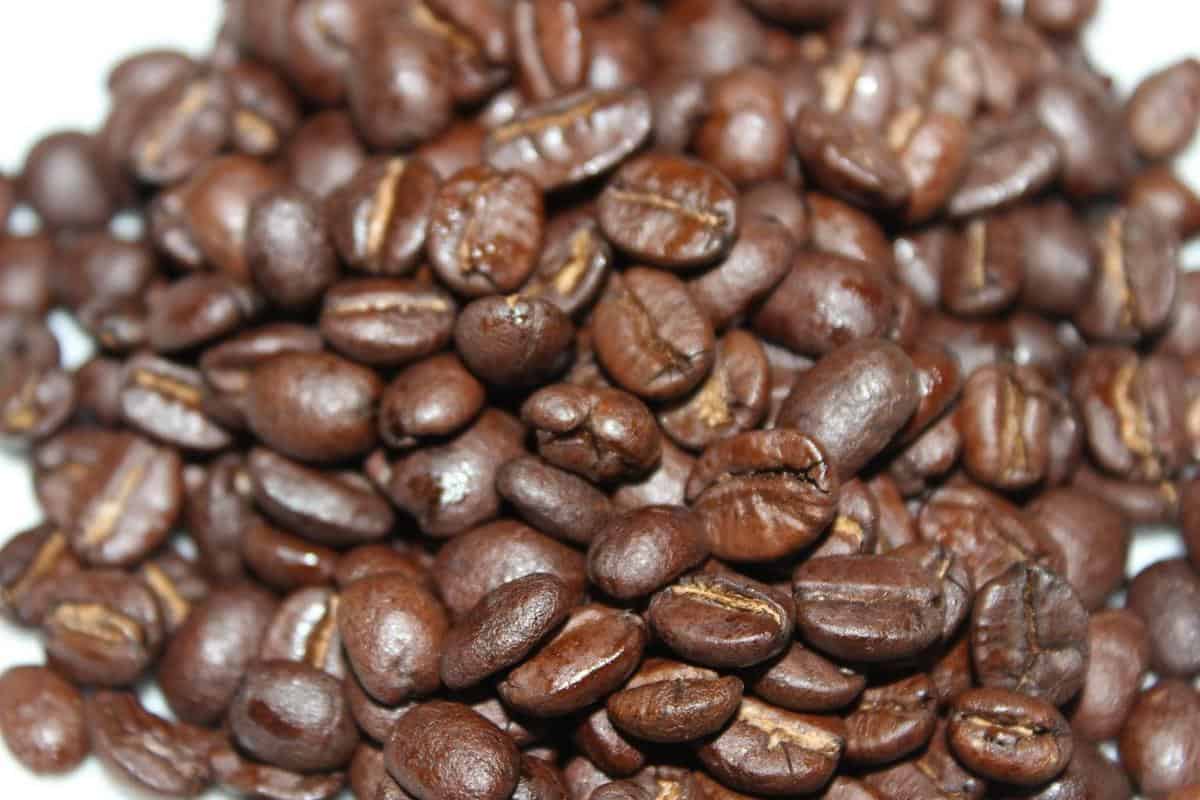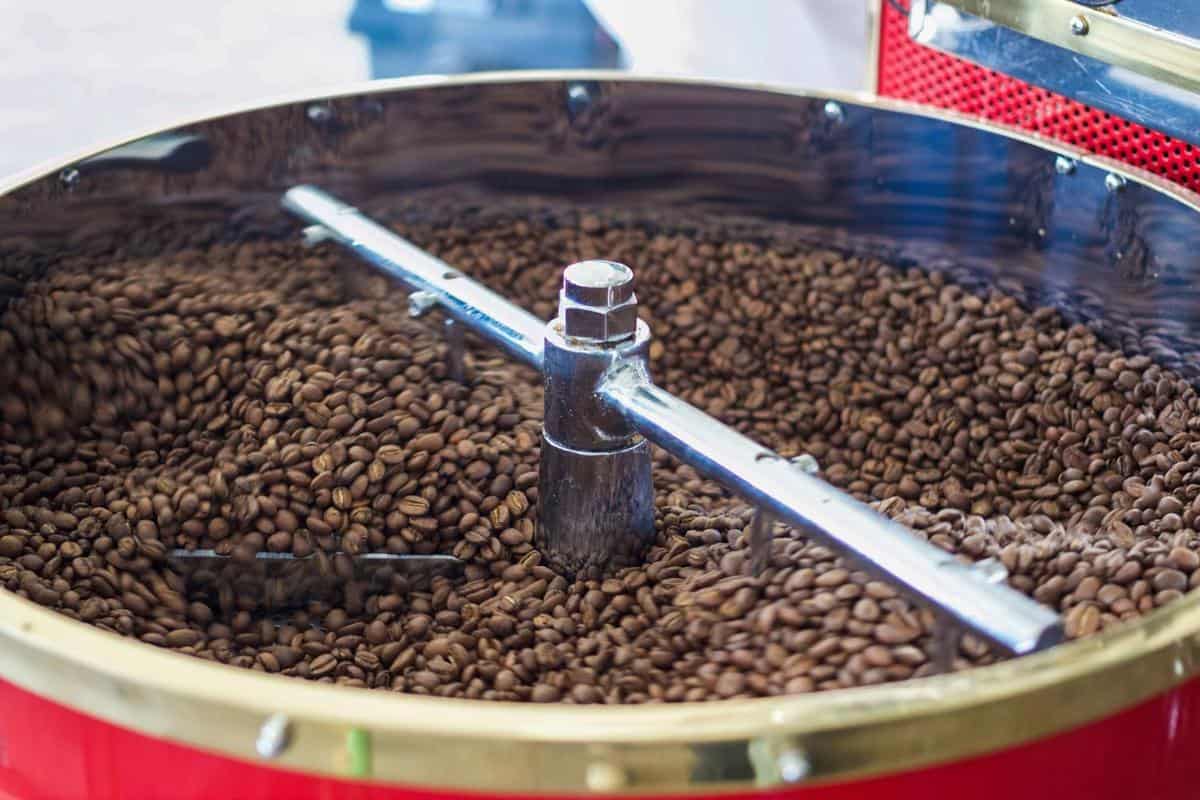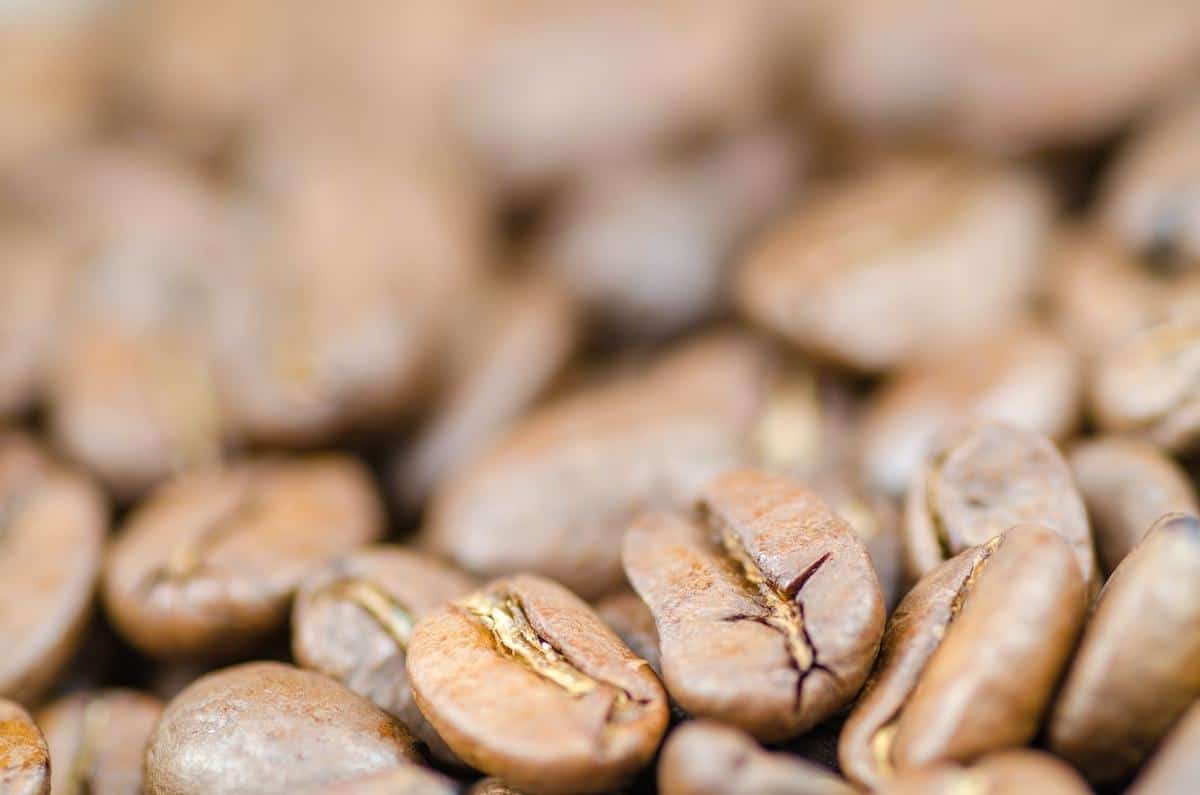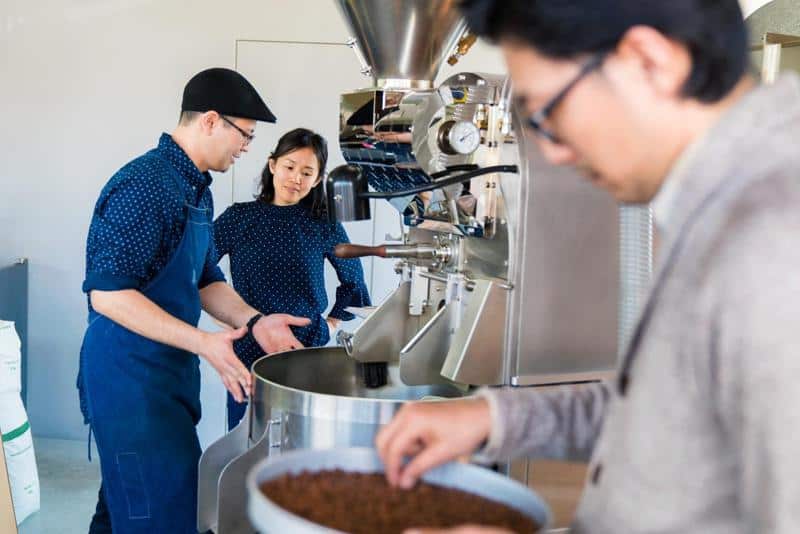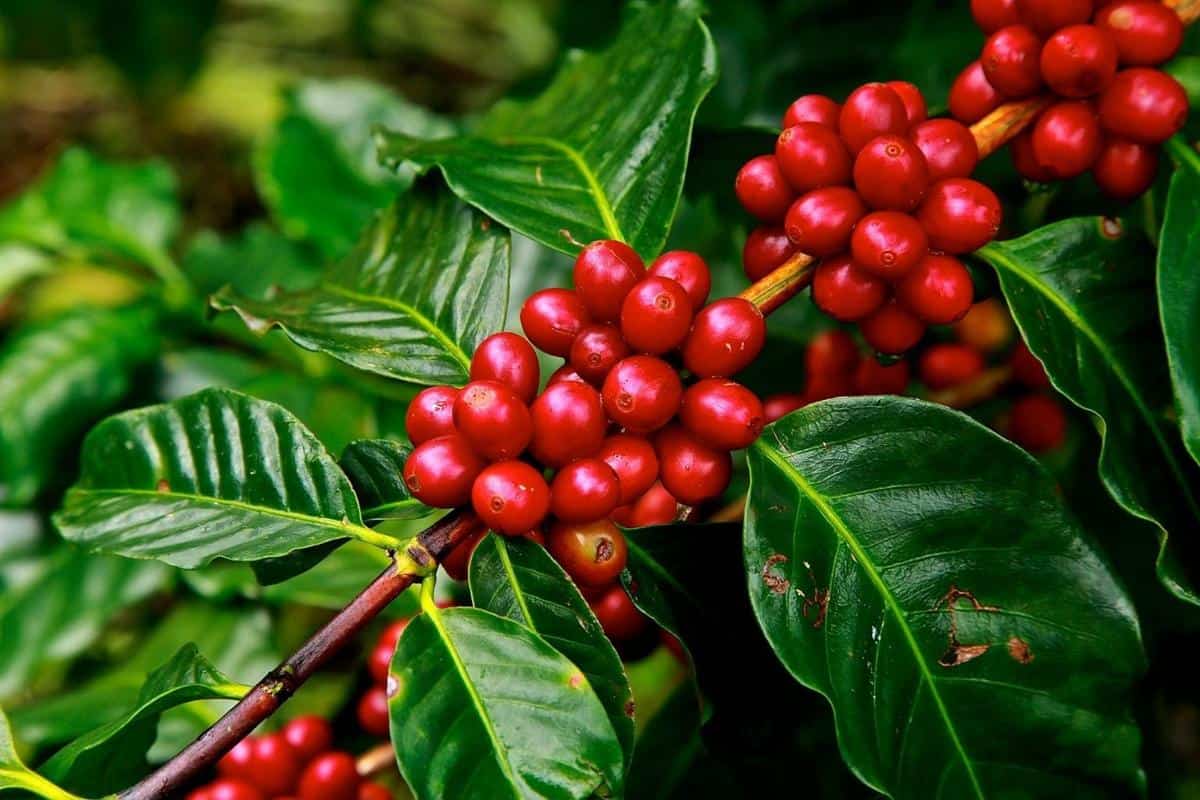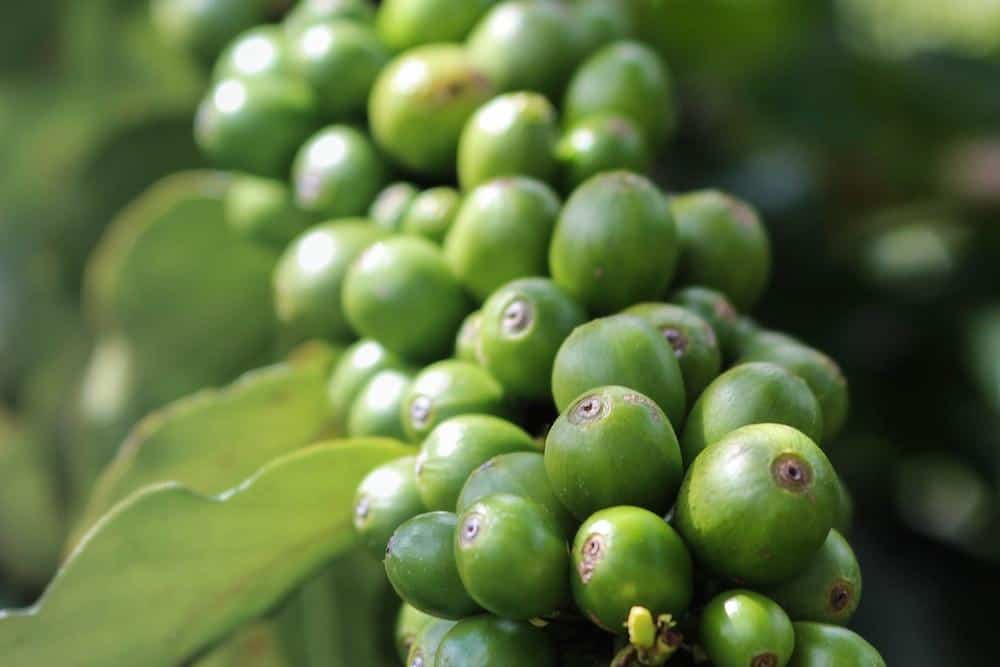Roasting coffee beans is an art that holds the power to transform a mediocre cup of joe into a rich, flavorful experience. Whether you’re a coffee connoisseur or simply someone who appreciates the aroma and taste of a well-crafted brew, learning how to roast coffee beans like a pro is a skill worth mastering.
In this article, we will delve into the world of coffee bean roasting, uncovering its importance in enhancing flavor and aroma while providing you with comprehensive knowledge and step-by-step guidance.
For those unfamiliar with the process, roasting coffee beans might seem like an unnecessary endeavor when store-bought options are readily available. However, what many fail to realize is that roasting your own coffee beans allows you to truly unlock their full potential.
During the roasting process, chemical reactions occur within the beans that release essential oils and develop complex flavors. By taking control of this process, you can not only customize your roast level but also create a blend perfectly suited to your taste preferences.
Imagine the satisfaction of savoring a cup of coffee brewed from beans roasted by your own hand. With each sip, you’ll embark on a journey through layers of flavor and aroma that cannot be replicated by mass-produced options.
So why settle for mediocrity when you can indulge in the rewarding experience of roasting your own coffee beans? In the sections ahead, we will guide you through every aspect of achieving excellence in home roasting, from understanding the basics to troubleshooting common issues.
Get ready to dive into an enticing world where precision meets passion. Together, we will explore everything there is to know about roasting coffee beans like a pro – from selecting high-quality beans to choosing the right equipment and perfecting each stage of the roasting process. With our guidance and your newfound expertise, get ready to elevate your morning routine and indulge in aromatic cups of freshly roasted perfection. The journey starts now.
Understanding the Basics of Coffee Roasting
When it comes to enjoying a delicious cup of coffee, the roasting process plays a crucial role in enhancing the flavor and aroma. Understanding the basics of coffee roasting is essential if you want to take your coffee experience to another level. By learning about the different stages of roasting and mastering time and temperature control, you can become a pro at roasting your own coffee beans.
The first step in understanding coffee roasting is familiarizing yourself with the different stages that coffee beans go through during the process. These stages include drying, browning, first crack, second crack, and beyond. Each stage contributes to changes in flavor, aroma, and roast level. It is important to note that different types of coffee beans may react differently during these stages due to variations in their moisture content and density.
Time and temperature control are crucial factors when it comes to achieving the desired roast for your coffee beans. Generally, lighter roasts require shorter roasting times at lower temperatures to preserve some of the bean’s original characteristics while maintaining acidity. On the other hand, darker roasts require longer times at higher temperatures for a bolder flavor profile with reduced acidity. Experimenting with time and temperature combinations will help you find your preferred roast level.
By grasping the basics of coffee roasting and becoming knowledgeable about the different stages and control parameters involved, you can embark on an exciting journey where you have full control over your coffee’s taste and aroma. Whether you prefer a light roast or a dark one, honing your skills as a home roaster allows you to explore various flavors profiles specific to different regions and types of beans.
So why not dive into this world of endless possibilities? Roast your own coffee like a pro.
Choosing the Right Coffee Beans for Roasting
To embark on your coffee roasting journey and achieve a professional-quality roast, it is crucial to choose the right coffee beans. The quality and characteristics of the beans will greatly impact the final flavor and aroma of your cup of coffee. In this section, we will guide you on selecting high-quality coffee beans for optimal results and discuss the different types of coffee beans and their flavor profiles.
When choosing coffee beans for roasting, it is important to prioritize freshness. Look for beans that have been recently harvested and roasted. Freshly roasted beans will provide more vibrant flavors compared to those that have been sitting on store shelves for a long time.
Another factor to consider is the origin of the coffee beans. Different regions around the world produce distinct flavors in their coffees due to variations in climate, soil conditions, and processing methods. For example, beans from Central America are known for their bright acidity and fruity notes, while African coffees often exhibit floral and citrus flavors.
In addition to origin, you should also consider the variety of the coffee bean. The two most common varieties are Arabica and Robusta. Arabica beans are generally considered higher quality with more complex flavors, while Robusta beans have higher caffeine content but may lack some of the nuanced flavors found in Arabica coffees.
| Origin | Flavor Profile |
|---|---|
| Ethiopia | Fruity, floral, wine-like |
| Colombia | Bright acidity, caramel sweetness |
| Brazil | Nutty, chocolatey, low acidity |
| Sumatra | Earthy, herbal, full-bodied |
By understanding the flavor profiles associated with different coffee bean origins and varieties, you can choose beans that are aligned with your taste preferences and desired end result. Experimentation with various origins and varieties will also allow you to discover new flavors and expand your coffee roasting expertise.
The Equipment Needed for Roasting Coffee Beans
When it comes to roasting coffee beans like a pro, having the right equipment is crucial. While there are various methods of roasting coffee beans, each requiring different tools, here are some essential equipment options to consider:
- Oven: One of the most basic ways to roast coffee beans at home is by using an oven. This method requires an oven-safe pan or tray and allows for easy temperature control. However, it may take some trial and error to achieve optimal results due to uneven heat distribution.
- Popcorn popper: Another popular option for home roasting is using a popcorn popper. These machines provide consistent heat and air circulation, resulting in even roasts. It’s important to note that using a popcorn popper solely for coffee roasting is recommended, as the process can leave residue and affect subsequent batches of popcorn.
- Dedicated coffee roasting machine: For those looking to invest in a dedicated piece of equipment for coffee bean roasting, there are various options available on the market. These machines offer precise temperature control and airflow, allowing for consistent and customizable roasts.
| Equipment Option | Description |
|---|---|
| Oven | Uses an oven-safe pan or tray for roasting; uneven heat distribution may require experimentation. |
| Popcorn popper | Provides consistent heat and air circulation; should be used exclusively for coffee roasting. |
| Dedicated coffee roasting machine | Offers precise temperature control and airflow for consistent and customized roasts. |
Regardless of the method chosen, it’s essential to have a reliable timer, thermometer, and a cooling tray or plate to transfer the roasted beans for immediate cooling. Experimenting with different equipment and techniques can also be part of the fun in discovering the perfect roast that suits your taste preferences.
It’s worth noting that safety is paramount when roasting coffee beans at home. Always follow manufacturer guidelines and exercise caution with hot surfaces and open flames. With the right equipment and a little practice, you’ll be well on your way to becoming a coffee bean roasting pro.
Preparing the Coffee Beans for Roasting
Before diving into the exciting process of roasting coffee beans, it is crucial to properly prepare them for the best possible results. Preparing coffee beans involves ensuring their cleanliness, freshness, and accurate measurement. Here are some essential steps to take when preparing your coffee beans for roasting:
- Cleaning and Storing: Begin by inspecting your coffee beans and removing any debris or defective beans. It is advisable to rinse the beans with clean water to remove any remaining dirt or dust particles. After cleaning, make sure to dry the beans thoroughly before moving on to the next step. Once dried, store your coffee beans in an airtight container in a cool, dark place away from direct sunlight and moisture. This will help preserve their freshness and protect them from external factors that could affect their flavor.
- Measuring: Accurate measurement of coffee beans is vital for consistent results. Use a kitchen scale to weigh the desired amount of coffee beans based on your preferred roast size or recipe. As a general rule of thumb, use approximately 1 ounce (28 grams) of coffee beans per 16 ounces (473 milliliters) of water for a standard cup of joe. Adjust the measurement according to personal preference and brewing method.
- Preparing Desired Amount: Once you have measured the appropriate amount of coffee beans, grind them just before roasting for maximum freshness. Avoid grinding too far in advance, as this can result in loss of flavor and aroma. If you’re unsure about grinding methods or equipment, consider investing in a quality burr grinder that allows you to control the coarseness or fineness of your grind.
By following these steps in preparing your coffee beans for roasting, you’ll set yourself up for success in achieving delicious cups of freshly roasted coffee at home. Now that we’ve covered this crucial preparation stage, let’s proceed to the next section – a step-by-step guide on roasting coffee beans. So grab your beans, gear up your equipment, and let’s start roasting like a pro.
Step-by-Step Guide on Roasting Coffee Beans
Roasting coffee beans is an art form that requires precision and patience. While it may seem complex at first, with the right knowledge and techniques, you can roast your own coffee beans like a pro. In this section, we will provide you with a step-by-step guide on how to roast coffee beans and achieve the perfect roast every time.
Step 1: Preheating Your Roaster
Before you begin roasting, it’s important to preheat your roaster to the desired temperature. This ensures that the coffee beans roast evenly and consistently. Follow the manufacturer’s instructions for preheating your specific roaster model.
Step 2: Weighing and Measuring the Coffee Beans
Accurately weighing your coffee beans is crucial for achieving consistent results. Use a digital scale to measure the desired amount of coffee beans based on your preferred brew ratio. A common starting point is a 1:15 ratio, which means using 1 gram of coffee beans for every 15 grams of water.
Step 3: Loading the Coffee Beans into the Roaster
Once your roaster is preheated and you have measured out your coffee beans, carefully load them into the roasting chamber. It’s important not to overload the chamber to allow for proper airflow during the roasting process. Aim for an even layer of beans without overcrowding.
Step 4: Initiating and Monitoring the Roast
Start the roasting process according to your roaster’s instructions, ensuring that both time and temperature are properly controlled throughout. Keep a close eye on the color changes of the beans as they progress through different stages of roasting. The first crack typically occurs around medium roast, while dark roast levels exhibit a second crack.
Step 5: Cooling and Storing the Roasted Coffee Beans
Once the desired roast level is achieved, it’s important to quickly cool down the roasted coffee beans to halt the roasting process. Transfer them to a cooling tray or colander and allow them to cool completely before storing. To preserve freshness and flavor, store your roasted coffee beans in an airtight container in a cool, dark place away from moisture and sunlight.
By following this step-by-step guide, you can confidently roast your own coffee beans at home like a true pro. Experiment with different types of coffee beans and roast levels to find your preferred flavor profile. Embrace the journey of becoming a master roaster and savor the delightful flavors of your homemade cup of joe.
Tips and Tricks to Achieve the Perfect Roast
Achieving the perfect roast requires a combination of skill, precision, and attention to detail. Whether you’re new to roasting coffee beans or a seasoned pro looking for some extra guidance, these tips and tricks will help you elevate your roasting game.
- Pay Attention to Bean Color: One of the key indicators of roast level is the color of the beans. Lighter roasts tend to have a golden or light brown color, while darker roasts have a deep brown or even black appearance. Use visual cues to determine the desired roast level and adjust your roasting time accordingly.
- Listen for Crackling Sounds: During the roasting process, coffee beans undergo changes that can be heard as crackling sounds. The first crack occurs when the beans expand and release moisture, resulting in a lighter roast. The second crack signifies a darker roast as oils are released from within the beans. Pay close attention to these sounds as they can help guide you in achieving your desired roast level.
- Follow Your Nose: Aroma plays a crucial role in determining the flavor profile of roasted coffee beans. As you roast your beans, take note of the different scents that emerge. Lighter roasts tend to have floral or fruity aromas, while darker roasts develop more smoky or chocolaty notes. Use your sense of smell as an additional tool to gauge roast level and make adjustments accordingly.
In addition to these tips, it’s important to keep experimenting and refining your techniques as you gain more experience in roasting coffee beans. Each batch may present unique challenges and opportunities for improvement, so don’t be discouraged by setbacks along the way. With practice and patience, you’ll soon be able to consistently achieve the perfect roast that suits your taste preferences.
Cooling, Storing, and Grinding Roasted Coffee Beans
After successfully roasting your coffee beans, the next crucial step is to properly cool, store, and grind them. These steps are essential to preserving the freshness and flavor of your freshly roasted beans. Here is a guide on how to cool, store, and grind your roasted coffee beans like a pro.
Cooling Roasted Coffee Beans
Once the desired roast level has been achieved, it is important to quickly cool down the beans to stop the roasting process and lock in their flavor. You can do this by transferring the beans from the roasting vessel onto a cooling tray or sheet pan. Spread them out in a thin layer, allowing air circulation for an even cooling process. Avoid using a wet surface for cooling as it can cause moisture absorption.
Storing Roasted Coffee Beans
Proper storage is crucial to maintain the freshness and quality of your roasted coffee beans. It is recommended to store them in an airtight container at room temperature away from direct sunlight or sources of heat. Freezing or refrigerating roasted coffee beans is generally not recommended as it can result in moisture damage and flavor degradation due to condensation.
Grinding Roasted Coffee Beans
To enjoy a delicious cup of coffee, you will need to grind your roasted beans just before brewing. It is best to invest in a burr grinder rather than using blade grinders for more consistent particle size. The coarseness of the grind will depend on your preferred brewing method. For example, espresso requires a fine grind while French press needs a coarse grind.
By following these proper practices for cooling, storing, and grinding your freshly roasted coffee beans, you can ensure that every cup you brew embodies the flavors and aromas that make home roasting such a rewarding experience.
Exploring Different Roast Levels and Their Characteristics
Light Roast
The light roast is characterized by the light brown color of the coffee beans. This type of roast is often referred to as a “first crack” roast. The flavors in a light roast are more acidic and fruity, allowing the natural characteristics of the coffee bean to shine through.
Light roasts typically have a higher caffeine content and a lighter body compared to darker roasts. If you enjoy bright and vibrant flavors with a crisp acidity, a light roast may be your preferred choice.
Medium Roast
Moving on to the medium roast, this roast level is identified by its medium brown color and slightly stronger flavor profile. During this stage of roasting, the beans develop more body and have less acidity compared to light roasts.
Medium roasts offer a balance between the brightness of light roasts and the fuller body of dark roasts. With flavor notes ranging from nutty to caramel, medium roasts are versatile and can be enjoyed by those who prefer a balanced cup of coffee.
Dark Roast
For those who prefer bolder flavors, dark roasts are a popular choice. Dark roasted beans have an oily surface and appear very dark brown or almost black in color. This longer roasting time results in beans with reduced acidity and increased bitterness. Dark roasted coffees tend to showcase rich chocolatey, smoky, and sometimes even burnt undertones. A dark roast offers a full-bodied cup with an intense flavor that lingers on your palate.
It’s important to note that each coffee bean variety will respond differently to various roast levels, so it’s worth experimenting with different beans and degrees of roasting to find your favorites. Remember, taste preference is subjective, so don’t be afraid to explore different roast levels until you find your perfect cup.
Troubleshooting Common Roasting Issues
Uneven Roasting
One common issue that can occur during the coffee bean roasting process is uneven roasting. This means that certain areas of the coffee beans may be over-roasted while other areas remain under-roasted. This can result in an inconsistent and unbalanced flavor profile in the brewed coffee.
To troubleshoot this issue, it is important to ensure that you are using a heat source that provides even heat distribution. If you are using an oven, make sure to preheat it thoroughly and use a baking sheet or a wire rack to allow for proper airflow around the beans. If you are using a dedicated coffee roasting machine, check that the internal components are functioning properly and evenly distributing heat.
Another potential cause of uneven roasting could be overcrowding the roasting chamber or container. Make sure not to overload the equipment with too many beans, as this can prevent proper air circulation and lead to inconsistent roasting. It is recommended to roast smaller batches of coffee beans at a time to achieve more consistent results.
Additionally, regularly stirring the beans during the roasting process can help promote even heating and prevent hot spots. Using a wooden spoon or a dedicated stirring tool, gently agitate the beans every few minutes to ensure they are exposed to an equal amount of heat.
Under/Overdevelopment
Another common issue when roasting coffee beans is underdevelopment or overdevelopment. Underdeveloped beans may exhibit grassy or sour flavors, while overdeveloped beans can taste excessively bitter or burnt.
To address underdevelopment, ensure that you are giving enough time for the entire batch of beans to reach their desired roast level. Some sections of the batch may appear roasted while others remain lighter in color, indicating underdevelopment. Extend the overall roasting time slightly while also ensuring adequate application of heat throughout.
On the other hand, if you find that your beans have been overdeveloped, it is important to adjust your roasting time or temperature. Reduce the total roasting time or lower the temperature slightly to prevent the beans from reaching a dark roast level too quickly. Additionally, pay close attention to the cracking sounds during the roasting process, as these can indicate the progress of the beans and help you determine when to stop the roast.
Achieving Consistent Roast Levels
To maintain consistent roast levels across multiple batches, it is crucial to keep track of important variables such as time and temperature. Every roasting method and equipment may have different heat intensities, so it is essential to understand how your specific setup operates.
Using a timer along with a thermometer will greatly assist in achieving consistent results. Record your preferred time and temperature settings for each desired roast level and refer back to them for future batches. Regularly monitor and adjust these variables based on feedback from previous roasts until your desired flavor profile is consistently achieved.
By troubleshooting these common roasting issues, you can ensure that each batch of coffee beans reaches its full potential and yields delicious cups of coffee every time. Experimenting with different techniques and adjusting variables will help you become more proficient in the art of coffee bean roasting like a true professional.
Conclusion
In conclusion, learning how to roast coffee beans like a pro can offer a truly rewarding experience. The process of roasting your own coffee beans not only allows you to enhance the flavor and aroma of your coffee but also provides a sense of satisfaction that comes from creating something with your own hands. By understanding the basics of coffee roasting, choosing the right beans, and using the necessary equipment, you can achieve the perfect roast every time.
One of the fundamental aspects of mastering coffee bean roasting is understanding the different stages of roasting and effectively controlling time and temperature throughout the process. This knowledge will enable you to tailor your roast to suit your preferences and bring out the distinct flavors of each individual bean.
Additionally, selecting high-quality coffee beans is crucial for achieving optimal results. Knowing about different types of beans and their flavor profiles will allow you to experiment and discover new taste sensations.
Equipped with the right tools, such as an oven, popcorn popper or dedicated coffee roasting machine, you have everything you need to embark on your coffee roasting journey. Remember to thoroughly clean and store your beans before roasting them; this ensures that they remain fresh and maintains their quality.
By following a step-by-step guide on roasting coffee beans, paying attention to temperature settings and duration at each stage, you will be able to craft deliciously roasted beans every time.
Now that you have learned about cooling, storing, grinding roasted coffee beans, as well as exploring different roast levels and potential troubleshooting issues, it is time for you to dive headfirst into this exciting journey of becoming a master in coffee bean roasting. Start experimenting with various bean types, roast levels, and brewing methods to create your perfect cup of joe that showcases your skill as a true connoisseur.
So why wait? Grab some high-quality beans today and get ready to savor the rich flavors that come from roasting coffee beans like a pro.
Frequently Asked Questions
Can you roast your own coffee beans?
Yes, it is possible to roast your own coffee beans at home. Many coffee enthusiasts prefer to do so in order to have more control over the flavor and freshness of their coffee.
To roast your own beans, you will need raw green coffee beans, a roasting device such as an air popper or a dedicated coffee roaster, and some basic knowledge of the roasting process.
How to roast coffee beans perfectly?
Achieving the perfect roast for coffee beans requires careful attention to factors such as temperature, time, and color changes during the roasting process. The recommended starting point is to preheat the roasting device according to its instructions and then add the green coffee beans once it reaches the desired temperature.
Throughout the process, it is important to continuously monitor and adjust the heat source and duration until you achieve the desired roast level – whether that be light, medium, or dark.
Is it hard to roast coffee beans at home?
Roasting coffee beans at home may require some experimentation and practice before achieving consistent results. It can be considered relatively challenging for those who are new to coffee roasting because there are various variables involved that affect the final outcome.
These include factors like temperature control, bean agitation, and knowing when to stop the roast. However, with some research and hands-on experience, many people find joy in honing their skills and personalizing their own roasted beans.
How long do you roast coffee beans for?
The duration of roasting coffee beans depends on several factors including personal preference for roast level (lighter or darker), type of bean being roasted (different types have different optimal durations), and the specific roasting method being used (air popper vs drum roaster). On average, a typical batch of coffee beans may take anywhere from 10 to 20 minutes in most home roasters.
However, it is important to keep in mind that each batch may vary, so careful observation and monitoring is crucial throughout the entire process.
Is it worth home roasting coffee?
Whether home roasting is worth it ultimately depends on personal preferences and priorities. Home roasting allows for a greater level of control over the flavor profile, freshness, and quality of the coffee beans. It also provides an opportunity for coffee enthusiasts to experiment with different types of beans or blends and tailor the roast to their liking.
However, it does require an investment in equipment, time, and effort. If you enjoy the process of experimenting with flavors and want a more hands-on approach to your coffee routine, home roasting can be a rewarding and cost-effective option in the long run.

